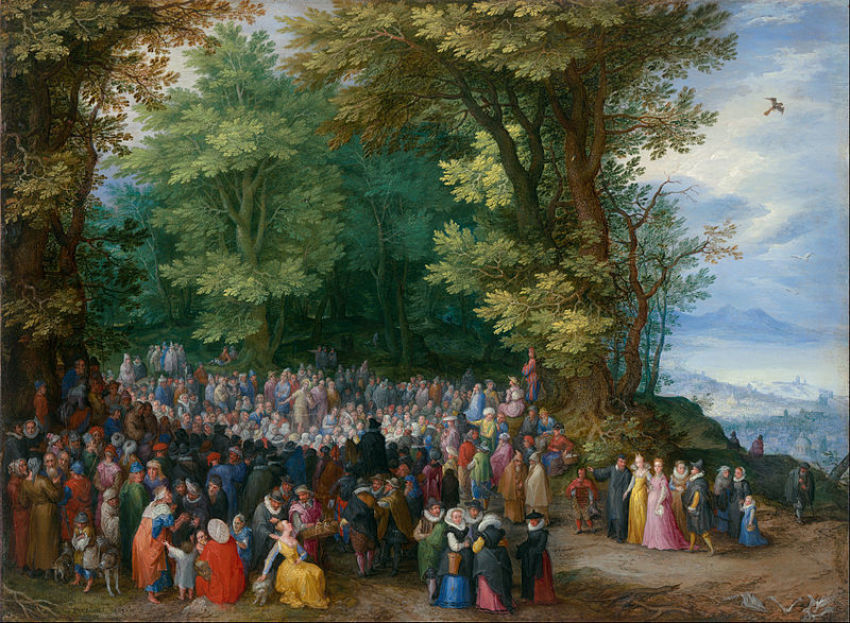New 'Visual Commentary on Scripture' website offers new way to study the Bible

A new $2 million web project launched by King's College London is offering users a new way to visually digest biblical Scripture through the analyses of classic and contemporary works of art.
In November, the United Kingdom-based public research university officially launched a website titled Visual Commentary on Scripture, thevcs.org, a project that has been over a year in the making and was made possible by a donation from billionaire U.S.-based philanthropists Roberta and Howard Ahmanson.
The project, which aims to cover every book in the Christian Bible, uses works of historic and modern visual art that reflect messages found within passages of Scripture.
According to the project’s director, the VCS aims to make it easier for people to see the “bridge between the historic traditions of Christianity and the art world.”
“What we are seeing now, and I think it is a new moment in Christian history, more Protestant and Evangelical churches have a very strong desire of wanting to use a visual language in the mission,” King’s College professor of Christianity and the arts Ben Quash told The Christian Post on Friday.
“Visual language is a new kind of currency among young people who talk to each other all the time in visual language by sharing images on [social media.] So churches who want to communicate the Gospel for young people who talk in images are having to take images seriously. I think that is very exciting because it means that there is a new opportunity to draw people into reading the Bible through using visual arts.”
Each passage of scripture included in the VCS will have three accompanying works of visual art that all relate to the biblical passage in question. Each painting associated with the scripture will have their own commentaries written by a select writer or author.
The commentaries of the paintings reflect on the historical perspective of the time period the artwork was completed as well as perspectives on the passages of Scripture they are associated with.
As of now, there are nearly 100 passages of scripture completed by the project, each with their own three paintings and accompanying reflections.
One example is the VCS exhibition of the “Sermon on the Mount,” which is accompanied by a 1481–1482 fresco by Italian painter Cosimo Roselli, a 1442 fresco by Italian painter Fra Angelico and a 1598 oil painting by Flemish painter Jan Brueghel the Elder.
According to Quash, the goal is to have over 1,500 scripture exhibitions included in the project with about 240 being produced per year.
The shortest scriptural passage in the project currently is two verses long and the longest passage is three chapters.
Quash, who joined King's College London as its first professor of Christianity, told CP that the goal to reach 1,500 exhibitions could take five years or more. But Quash believes the project will enable people to read the Bible in a new way.
“This is something that people wherever they are … they can engage with a short passage of Scripture and have their imagination kindled by the works of art and be stimulated to come into the presence of the biblical text through their hand-held devices and [computers],” Quash stated.
“Wherever they are, they have an invitation to read the biblical text through the attractiveness of visual imagery. That for us is a big motivation. We can reach people who probably wouldn’t otherwise be reading the Bible and also enriching people who have a great relationship with the Bible already by giving them new ways to explore, new ways to relate to it.”
As the exhibitions are composed by various authors, Quash maintains that he and his King’s colleagues maintain a very high level of standard.
“Although we want to reach a very wide public, nevertheless it is a scholarly project,” Quash, who heads the first master's program in the world that is a joint enterprise between a theology school and a major international art gallery (the National Gallery in London), said.
“Those who write for it have to write for a non-specialist audience. We expect them to do their homework and go and read about the Bible passage and read about the way it has been interpreted historically and read about the works of art that they want to use. They don’t just go throwing out their opinions but actually ground them in detailed research. It will be a more enduring resource as a result of that.”
Quash said that the biggest challenge the project faces is getting artwork and writers from outside of North America and Europe. The project does already include a few pieces of art from Latin America, Asia, and Africa.
“It is very important to me that we have art and people writing from beyond the Western world,” Quash stressed.
Quash also aspires to have the VCS available in several world languages, including Chinese.
He is also hopeful the VCS will be used an educational resource in schools and colleges throughout the world.
“Someone might give it as a class assignment and tell their students: ‘Go and look at this art. It has been arranged on the VCS site and your project is to go and do your own exhibition,’” Quash imagined. “That will get them thinking about the text and visual art in relation to the text.”
According to Quash, the project was partly inspired by the Ancient Christian Commentary on Scripture, a multi-volume book set in which the biblical text is surrounded by classical commentary from early church theologians.
“The idea was to get people to realize the depth of the commentary tradition in the early centuries of Christianity and give them an opportunity to read the Bible in the company of the great early church theologians,” Quash said.
“Instead of textual commentary gathered around the Bible passages, what we did was works of art that people selected [and explained] how the [biblical] texts interact with the works of art. In a way, the nearest model we have is this Ancient Christian Commentary. But it takes a big step beyond that by going into the visual realm.”
Follow Samuel Smith on Twitter: @IamSamSmith
or Facebook: SamuelSmithCP



























